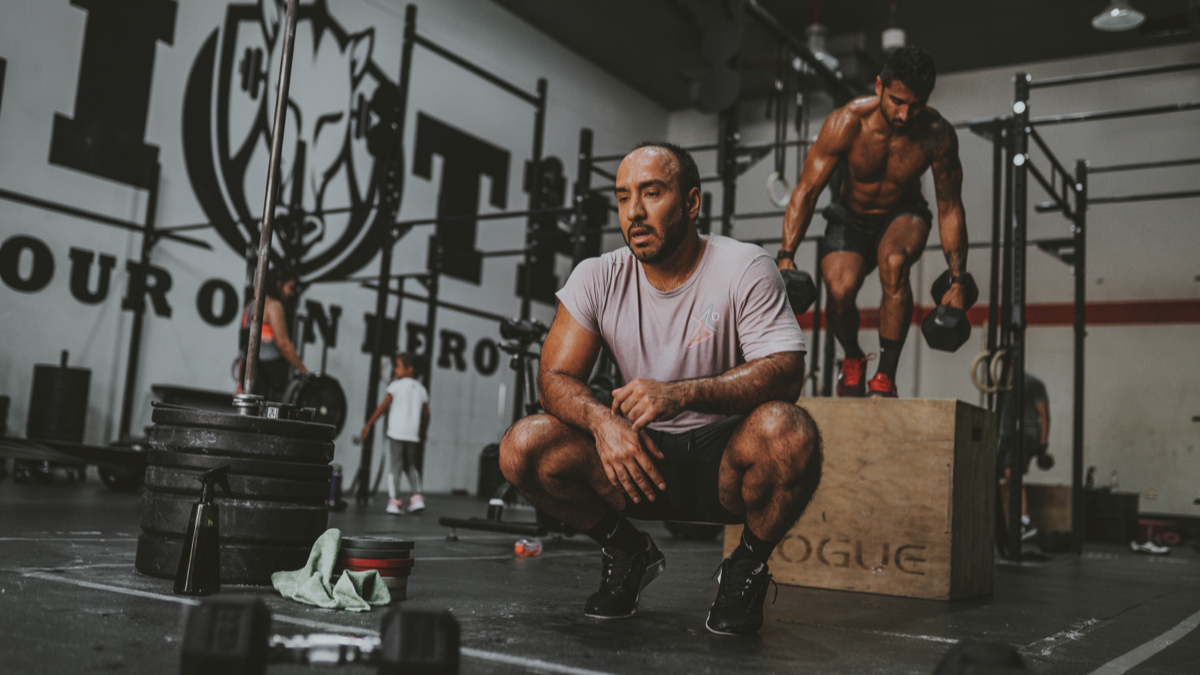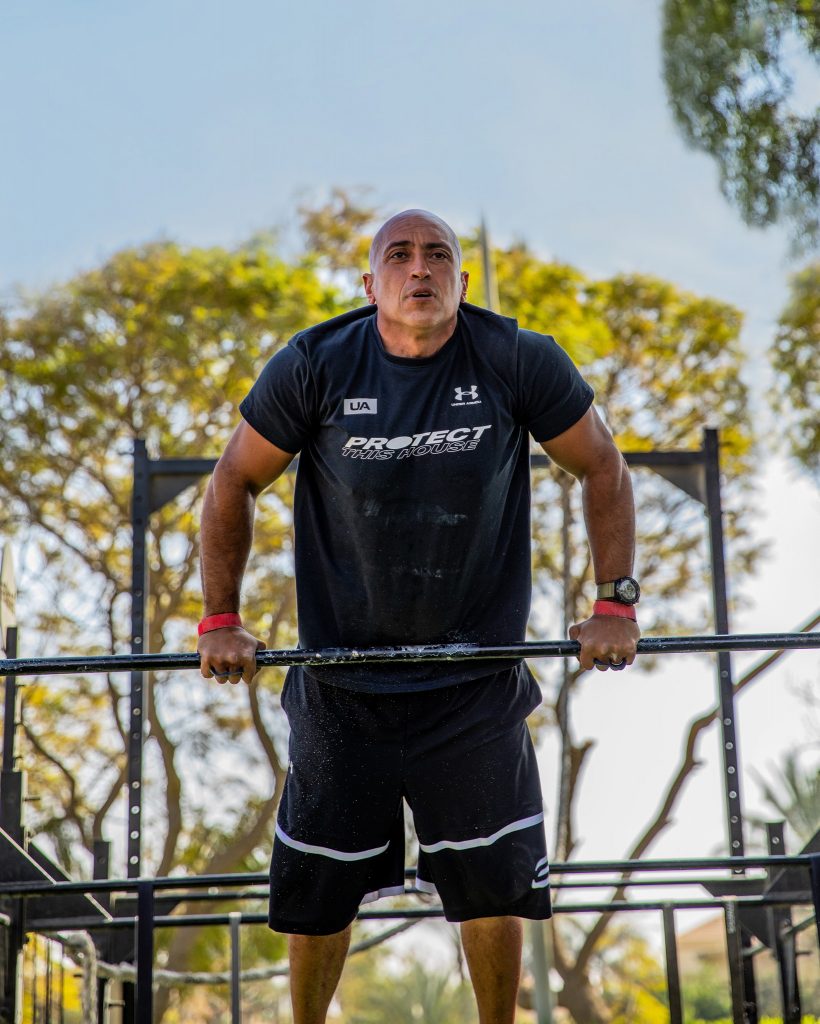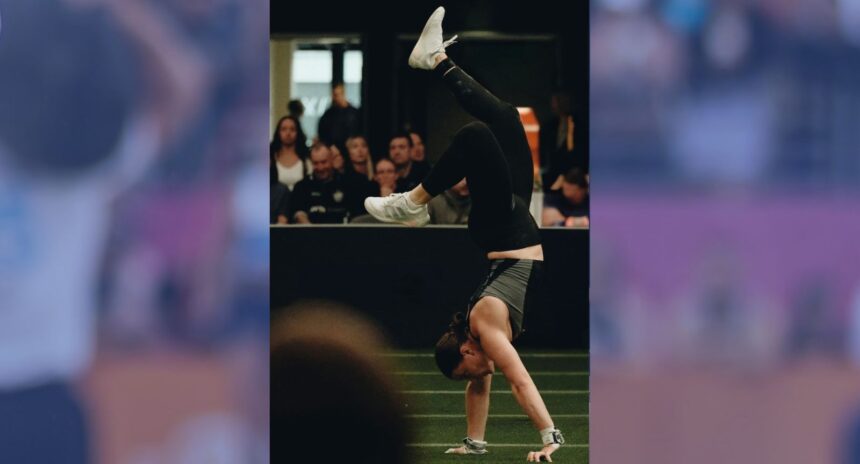CrossFit Athletes and Affiliates Give Perspective on Ramadan Training

From April 12 and May 12, practicing Muslims observe Ramadan, a holy period of fasting dedicated to reflection, community and prayer. During this time, those who are healthy fast from dawn until dusk.
The big picture: Even during this hours-long fast — which includes water and food — CrossFitters across the globe are still training.
- “Ramadan. It’s supposed to be a month to get into worship and everything, yet we try as much as we can [to keep life as normal]. I’m one of the believers that doing sports and taking care of your body and your health is part of the worship, the whole journey in life,” says Ziad Mamdouh Ammar, founder and owner of TNG CrossFit in Egypt.
How they adjust: In Egypt, both Ammar and Riham Masoud, owner of MonkeyBars Egypt, cancel their morning classes and add evening classes after Iftar (the sunset meal).
- “The entire country follows a Ramadan schedule with less working hours for employees, stores, gyms, etc. If you go out in the streets right after sunset you’ll find the streets completely empty,” Masoud explained in an email.
- Masoud holds classes at MonkeyBars right before Iftar, at 5 p.m., and in the evening, around 9:30 or 10 p.m., after prayers.
- Ammar designs a similar schedule, holding a lighter-intensity, boot camp-like class before Iftar, then stacking classes at 9, 10, and 11 p.m. “If you want to lift, if you want to do high intensity, it’s better to be after Iftar,” he says.
In Dubai, things look a bit different. Because of their large expat (non-fasting) population, James Wright of CrossFit Alioth keeps morning classes to their typical schedule, adding mixed classes at 3:30 p.m., 6 p.m., 7:30 p.m., (to accommodate those who went to the mosque), and 10:15 p.m., with a ladies-only class at 9 p.m.
- “[We get] too many people to those late classes,” Wright says. “The gym, post-COVID, has gone from being busy to being very very crazy. So we’ve been strained in class capacity anyway, and the Ramadan schedule squeezes things a bit more.”
Training: In general, training during Ramadan is expected to be at a lower intensity, with more focus on strength training, bodyweight movements, and shorter WODs — exercise that won’t drain the body during fasting.
But as Craig Harriman of Base 3 in Dubai points out, intensity and volume are up to individual athletes.
- “This is my 18th Ramadan, and I’ve seen people approach this many different ways. Some people can maintain training intensity and not really see any change in performance, some athletes need to drastically adjust their training schedule and intensity,” Harriman says. (Only about 20% of his members are fasting and continuing to exercise.)
- “You do tend to see athletes use Ramadan as a motive to dial in their training, and use it as a healthier period, fasting or not,” he adds.
- “You never start Ramadan in a certain shape and finish it in the same shape. You either get in really good shape, because of the fasting, or you get in really bad shape because Ramadan is full of so many oriental desserts,” Ammar says.
Ammar, Masoud, and Wright have all added nutrition elements to their Ramadan training. Masoud has roped her athletes into a no dessert challenge; Ammar is running a “Shape It” nutrition, fitness, and weight-loss program; Wright has partnered with a nutrition company and is working to educate his athletes on best practices during Ramadan.

Wright views Ramadan as a “chance to reset.” He tends to run CrossFit Alioth on 8 to 16-week programming blocks with simple goals and takes the four weeks of Ramadan to focus on basics and how athletes feel, before launching into another major programming cycle.
- The purpose of his Ramadan training is to maintain. In the case of gymnastics, this means doing a lot of holds and isometric work; strength turns toward a rate-of-perceived exertion scale.
- “It’s just making sure we communicate with people and they understand that they don’t need to worry about ‘Oh, I didn’t feel a lot of energy or I didn’t RX that workout, where this is the one month you don’t need to stress about it,” Wright says.
- Rebecca Koch, also of CrossFit Alioth, says the best message for athletes is to “be patient with themselves and their bodies.”
Amin Attallah of 962 Athletics in Jordan says he has a “lot of PRs in Ramadan.”
- “To be honest, [Ramadan] is one of the best times to train. We don’t eat enough, but when your body is light — maybe you’re tired — but whenever you go warm up and start working out, it’s so good.”
- “[Ramadan] is a time to train and live your normal life. It’s like intermittent fasting… but the difference is that the time of eating is much less, and we can’t drink water,” Attallah continues.
Koch emphasizes that “while fasting and intermittent fasting are very trendy at the moment,” abstaining from water makes Ramadan much different. “This obviously has an impact on energy and exertion levels that people need to remember as well.”
Competing: Basel Qatamesh of CrossFit Ramallah in Palestine says he always advises athletes not to fast if competing.
For practicing Muslims that do have competitions during Ramadan — like the Team Quarterfinals that wrapped up April 25 — there’s an option to make up missed fasting days during the remaining 11 months of the Lunar calendar.
Though Qatamesh does not fast, he has seen some of his fellow competitors take fasting into consideration while training:
- “Usually before Iftar 1-2 hours they will train the strength segments as it does not require much energy and won’t cause a lot of thirst,” Qatamesh explains. “2-3 hours after Iftar they will do the conditioning segments. Training in Ramadan for the competitor athlete is usually more about maintaining not improving.”
Attallah has trained for competition while fasting and is currently working with a teen athlete planning to make the CrossFit Games this year.
- “I went to Regionals in 2018. It was the middle of Ramadan, so I was fasting for the first 20 days, and then the two days of Regionals I didn’t fast,” he says, noting that it was a “great experience.”
- Attallah explains that “everything is the same” with the training regime for his young athlete, they’re just decreasing volume.“He’s doing great training and everything… I’m not going to say that you feel good, but we’re used to it,” he says.
The bottom line: Ramadan is a time for reflection and community, and as Ammar puts it, if you believe your body and your health are gifts, training fits in with the spiritual focus of the month.
- “[Ramadan] is time to be mindful of our actions and appreciative for the things and opportunities that we have in life (and to give back to the less fortunate) – so all in all it is really a great month to be with the community, especially one that has a big mix of religious groups,” said Koch in an email.
Wright calls Ramadan a “coming together time of year,” saying that the classes held after Iftar are always “a very, very cool atmosphere.” Attallah echoes this sentiment, noting that they “have the best time of the year [and] all of the classes come together.” Every year, the 962 Athletics community completes a MURPH while fasting and eats Iftar together, breaking their fast with a potluck.
- “We have lots of people who may not be as stringently Muslim all year round, but for Ramadan, everyone goes very, very to the lesson, it’s very important for everyone,” says Wright. “[Ramadan] is about people finding a balance, what’s important to them, and prioritizing that.”

